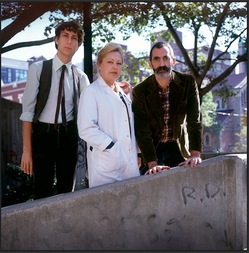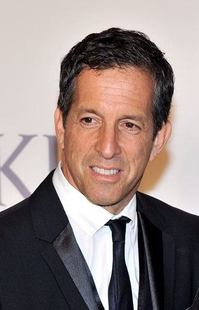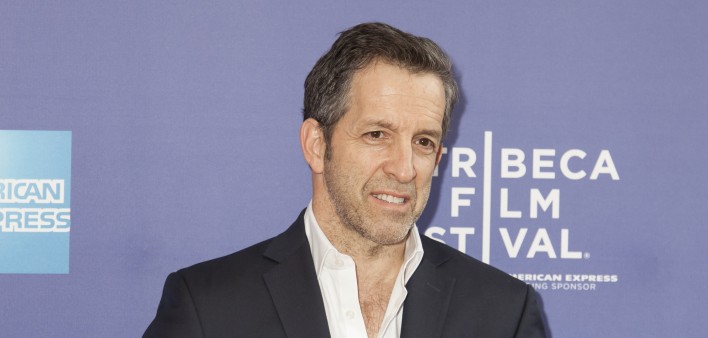Fashion mogul Kenneth Cole produced a documentary this year about amfAR, the American Foundation for AIDS Research, an organization whose board of trustees he has chaired for many years.
The Battle of Amfar is being shown on HBO, but frankly, I’m not eager to see it. After all, the film’s promotional material emphasizes a melodramatic mistruth: “In the darkest days of the epidemic, two very different women--Hollywood superstar Elizabeth Taylor and research scientist Mathilde Krim--joined forces to create amfAR (the American Foundation for AIDS Research), America’s first AIDS research organization.”
 The important efforts by Elizabeth Taylor and Mathilde Krim in combating the epidemic are only diminished by such a lie. The first AIDS research organization in the U.S., and possibly the entire world, was the AIDS Medical Foundation (AMF), formed in New York in 1983 by Dr. Joseph Sonnabend, Michael Callen, Mathilde Krim (pictured on right; photo by Peter Serling) and several others. Sonnabend knew Dr. Krim from interferon research and had asked for her help in raising money to study what was going on with his patients.
The important efforts by Elizabeth Taylor and Mathilde Krim in combating the epidemic are only diminished by such a lie. The first AIDS research organization in the U.S., and possibly the entire world, was the AIDS Medical Foundation (AMF), formed in New York in 1983 by Dr. Joseph Sonnabend, Michael Callen, Mathilde Krim (pictured on right; photo by Peter Serling) and several others. Sonnabend knew Dr. Krim from interferon research and had asked for her help in raising money to study what was going on with his patients.
The idea for the AIDS Medical Foundation came from the partner of one of Sonnabend’s patients--an African American, I might add, whose role has also been largely lost to history--and the point was to pursue community-based research drawing on Sonnabend’s pool of patients. I write about this history in my new memoir, Body Counts.
Krim was AMF’s first board chair and quickly became its most generous donor. Two and a half years later, in September of 1985, a community clinician based in Los Angeles, Dr. Michael Gottlieb, formed the National AIDS Research Foundation with Elizabeth Taylor as his high-profile co-founder. When Krim heard of Taylor’s involvement, she smartly used her Hollywood connections (her husband was head of a movie studio) to contact Taylor and propose the organizations join forces.
The truth is an interesting and important history, but curiously it isn’t the one represented in the promotion of Kenneth Cole’s film. While amfAR’s official history on its website isn’t as factually incorrect, it does render the role of Sonnabend, Callen, Gottlieb and others invisible, in favor of highlighting Krim and Taylor.
OK, so maybe that all sounds like petty behind-the-scenes stuff no one else cares about.
But last night Ken Cole was on Chelsea Handler’s Chelsea Lately and uttered another flat-out mistruth--a fabrication that is an insult to an entire community:
Handler: “How did you get involved with AIDS research?”
Cole: "This is was like 25 years ago and people weren’t talking about AIDS then because stigma was so devastating (and arguably stigma has killed more people than the virus itself has), and the gay community wasn’t speaking up, they were afraid to."
 I’ve got news for Ken Cole. Twenty-five years ago, it was almost solely members of the gay community who were speaking up about AIDS. In fact, in 1987, the executive directors of almost all the national lesbian and gay organizations protested government inaction in an act of civil disobedience and got arrested in front of the White House.
I’ve got news for Ken Cole. Twenty-five years ago, it was almost solely members of the gay community who were speaking up about AIDS. In fact, in 1987, the executive directors of almost all the national lesbian and gay organizations protested government inaction in an act of civil disobedience and got arrested in front of the White House.
It is also worth noting that it has been under Cole’s watch as amfAR’s board chair that the visibility of people openly living with HIV on amfAR’s board has dropped to an all-time low. There may be others I don’t know about, but of the 26 individuals listed today as members of amfAR’s board of trustees, I recognize only one, former POZ editor Regan Hofmann, as openly HIV-positive. Fewer than a third of the trustees are women. Only one, Harry Belafonte, is African-American.
For Cole to suggest that either the gay community “wasn’t speaking up” or imply that there wasn’t adequate attention to the disease until he got involved is wrong on so many levels. He owes the gay community--and all those who were “speaking up” in those years--an apology.
Please visit Body Counts at www.SeanStrub.com, on Facebook.com/BodyCounts and on Twitter @BodyCountsBook.








10 Comments
10 Comments